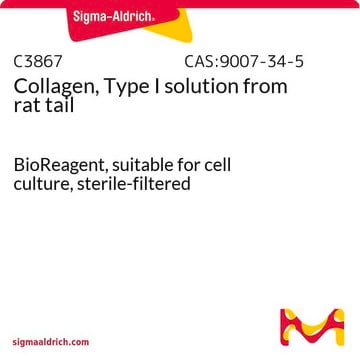Products may be shipped at a different temperature than the recommended long-term storage temperature. If the product quality is sensitive to short-term exposure to conditions other than the recommended long-term storage, it will be shipped on wet or dry-ice. If the product quality is NOT affected by short-term exposure to conditions other than the recommended long-term storage, it will be shipped at ambient temperature. As shipping routes are configured for minimum transit times, shipping at ambient temperature helps control shipping costs for our customers. For more information, please refer to the Storage and Transport Conditions document: https://www.sigmaaldrich.com/deepweb/assets/sigmaaldrich/marketing/global/documents/316/622/storage-transport-conditions-mk.pdf
360589
Tetra-hidrofurano
≥99.0%, ACS reagent, contains 200-400 ppm BHT as inhibitor, suitable for HPLC
Sinônimo(s):
THF, Oxolano, Óxido de butileno, Óxido de tetrametileno
About This Item
Produtos recomendados
Nome do produto
Tetra-hidrofurano, contains 200-400 ppm BHT as inhibitor, ACS reagent, ≥99.0%
grau
ACS reagent
Nível de qualidade
densidade de vapor
2.5 (vs air)
pressão de vapor
114 mmHg ( 15 °C)
143 mmHg ( 20 °C)
Ensaio
≥99.0%
Formulário
liquid
temperatura de autoignição
610 °F
contém
200-400 ppm BHT as inhibitor
Lim. expl.
1.8-11.8 %
técnica(s)
HPLC: suitable
Impurezas
≤0.015% peroxide (as H2O2)
≤0.05% water
resíduo de evaporação
≤0.03%
cor
APHA: ≤20
índice de refração
n20/D 1.407 (lit.)
pH
~7
p.e.
65-67 °C (lit.)
pf
−108 °C (lit.)
solubilidade
water: soluble
densidade
0.889 g/mL at 25 °C (lit.)
cadeia de caracteres SMILES
C1CCOC1
InChI
1S/C4H8O/c1-2-4-5-3-1/h1-4H2
chave InChI
WYURNTSHIVDZCO-UHFFFAOYSA-N
Procurando produtos similares? Visita Guia de comparação de produtos
Categorias relacionadas
Descrição geral
Aplicação
- Síntese orgânica
b) Compostos organometálicos
c) Reação de Reformatsky
d) Litiação
E) Redução com hidreto
f) Acoplamento catalisado por metais (Heck, Stile, Suzuki)
g) Reações mediadas por ácido de Lewis
- Cristalização
- Polimerização. Ex. Polimerização por RAFT (transferência reversível de cadeia por adição-fragmentação) de p-acetoxiestireno
- Revestimentos
- Como um ligante doador de O para formar complexos de coordenação
- Como solvente de fase móvel em cromatografia líquida de alta eficiência
Características e benefícios
produto relacionado
Palavra indicadora
Danger
Frases de perigo
Declarações de precaução
Classificações de perigo
Acute Tox. 4 Oral - Carc. 2 - Eye Irrit. 2 - Flam. Liq. 2 - STOT SE 3
Órgãos-alvo
Central nervous system, Respiratory system
Perigos de suplementos
Código de classe de armazenamento
3 - Flammable liquids
Classe de risco de água (WGK)
WGK 1
Ponto de fulgor (°F)
-6.2 °F - closed cup
Ponto de fulgor (°C)
-21.2 °C - closed cup
Escolha uma das versões mais recentes:
Já possui este produto?
Encontre a documentação dos produtos que você adquiriu recentemente na biblioteca de documentos.
Os clientes também visualizaram
Conteúdo relacionado
The 4L M-Bottle provides safe handling of solvents due to an innovative solvent bottle design with sealing technology to eliminate leaks and reduce risks in solvent dispensing.
-
How is shipping temperature determined? And how is it related to the product storage temperature?
1 answer-
Helpful?
-
-
How can I determine the shelf life / expiration / retest date of this product?
1 answer-
If this product has an expiration or retest date, it will be shown on the Certificate of Analysis (COA, CofA). If there is no retest or expiration date listed on the product's COA, we do not have suitable stability data to determine a shelf life. For these products, the only date on the COA will be the release date; a retest, expiration, or use-by-date will not be displayed.
For all products, we recommend handling per defined conditions as printed in our product literature and website product descriptions. We recommend that products should be routinely inspected by customers to ensure they perform as expected.
For products without retest or expiration dates, our standard warranty of 1 year from the date of shipment is applicable.
For more information, please refer to the Product Dating Information document: https://www.sigmaaldrich.com/deepweb/assets/sigmaaldrich/marketing/global/documents/449/386/product-dating-information-mk.pdfHelpful?
-
-
What apparatus do you recommend for HPLC solvent filtration?
1 answer-
The Sigma-Aldrich Vacuum Filtration Assembly gives you all the components you need including: funnel top, fritted glass funnel support, filtration flask, aluminum clamp, and silicone stopper. The Acrodisc Syringe Filters offer high quality filtration for analytical samples, certified for HPLC to ensure low extractable and available in a broad range of membranes to meet sample compatibility requirements.
Helpful?
-
-
Why do peroxides form in certain solvents and how do I test for it?
1 answer-
A significant number of laboratory solvents can undergo autoxidation under normal storage conditions to form unstable and potentially dangerous peroxide by-products. Molecular structure is the primary factor relating to a material’s potential for hazardous peroxide formation. It is important to understand the stability of materials in use and if unclear, consult Sigma-Aldrich Technical Support, [email protected].
Helpful?
-
-
What is the Department of Transportation shipping information for this product?
1 answer-
Transportation information can be found in Section 14 of the product's (M)SDS.To access the shipping information for this material, use the link on the product detail page for the product.
Helpful?
-
-
What are some of the preservatives used in the most common ethers and chlorinated solvents and why are they added?
1 answer-
Certain solvents will degrade over time requiring special handling and storage considerations. In addition, the products of certain degradation processes pose a potential safety risk if present at sufficiently high levels. For these types of materials, small amounts of stabilizing chemicals are added to slow down or stop material degradation.
Helpful?
-
-
Can you recommend a Solvent Extractor for organics from aqueous solution?
1 answer-
Solvent extractors are often used for the quantitative extraction of organics from aqueous solutions and separations in immunoassays. The MIXXOR system has been applied successfully in many laboratory solvent extraction operations and is ideal for the rapid screening of alternative solvents for specific extraction problems.
Helpful?
-
-
What are the options for drying solvents?
1 answer-
Sigma-Aldrich offers a full range of high-purity solvents with extremely low water levels specifically manufactured for moisture sensitive Organic and Biotech applications. Sigma-Aldrich also carries various drying agents such as molecular sieves, which are typically compatible with organic solvents.
Helpful?
-
-
Who do I contact about larger solvent volume needs?
1 answer-
Email us at [email protected] or visit Sigma-Aldrich Fine Chemicals for development and manufacturing-scale inquiries: [email protected]
Helpful?
-
Active Filters
Nossa equipe de cientistas tem experiência em todas as áreas de pesquisa, incluindo Life Sciences, ciência de materiais, síntese química, cromatografia, química analítica e muitas outras.
Entre em contato com a assistência técnica








